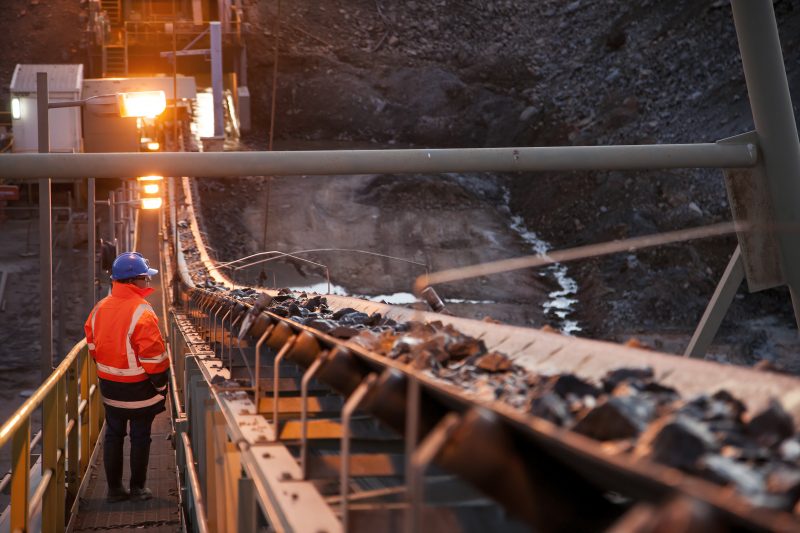The Earth’s underground is dangerous territory, making mineral extraction a hazardous job. Working their way through quarries, miners face occupational dangers daily. That’s why they need essential safety gear.
Despite most extractions done in safer ways, accidents may still happen. To reduce the impact of multiple risks, those in the mining industry shouldn’t work without these mining essentials to ensure safety.
Table of Contents
7 Essential Safety Gear For Mining Workers
Extracting minerals from the surface requires a facility for mining operations and pieces of personal protective equipment (PPE).
These essential pieces of safety gear will protect mining workers from the most common risks, including excessive vibrations and noises, thermal stress, chemical hazards, and dust inhalation, among many other dangers.
1) Hard Hats
As the name implies, hard hats protect the head from falling debris. They’re not only vital for construction workers but mining crew as well. Hard hats come in various designs based on industry use and specifications from government labor agencies, called Mine Safety and Health Administration (MSHA), specifically for the sector.
Depending on the working environment, some hard hats, for instance, either need to be water-resistant or ventilated or offer either half or full-face protection.
2) Respiratory Protection
Dust inhalation is one of the significant risks mining workers faces, especially those working along with coal mines. There’s even a term for a respiratory disease it causes—miner’s lung or ‘black lung.’ This condition primarily affects coal miners and is also often called coal workers’ pneumoconiosis or CWP.
Alongside a comprehensive dust management plan, companies must install dust control systems, most notably respiratory protection for each staff. Masks that cover the nose and mouth and with replaceable filters or those with air purifying properties are good choices.
3) Safety Goggles Or Glasses And Face Shield
Long-term dust exposure, especially in coal mining, doesn’t only cause respiratory issues. In the short term, dust and other mining debris can find their way to a worker’s eye and cause irritation and vision problems.
In some mining sites, welding metals are necessary, demanding workers to wear complete protection face shields. Additionally, miners also work with harmful chemicals and face the risk of chemical burns, respiratory issues, and potential toxicity.
Some companies have safety goggles with built-in respirators, which work to protect the eyes and respiratory system, promoting worksite safety.
4) Hearing Protection
With pieces of heavy equipment constantly drilling and poking the Earth’s surface, mining sites are one of the noisiest places out there. It doesn’t help that these tunnels are small and confined spaces, limiting the escape routes for these unpleasant vibrations and sounds.
The mining staff must have ear muffs or earplugs to prevent these loud noises from damaging their ear, leading to hearing loss. The danger of hearing loss is that it happens slowly, which means irreversible damages could happen before you know it. Some work sites use technology to reduce these noises in the form of vibration dampeners.
5) Fall Protection PPE
Falls are commonly associated with building home contractors or those working on tall structures. But do you know that mining workers are prone to falls even if they’re working underground? There’s a complex system of tunnels hundreds of feet underground.
Some mining areas even have elevators or mining shafts. It’s in these places where the risks of falling are highest.
Personal protective equipment for falls includes harnesses, anchor points, body support, and connectors.
6) Lighting Device And Reflective Wear
Because they’re confined, mining sites are also dark places. When workers can’t see where they’re going or what they’re working on, there’s a high risk of accidents and avoidable mistakes. Improving visibility is key to proper blasting procedures.
With it, you’ll know where to place the equipment to keep workers and the working area safe. An adequately lighted workspace is also helpful to prevent vehicle crashes and other accidents.
Lights can be mounted on hard hats to provide illumination for the worker. More importantly, stationary and portable lamps must also be available anywhere and anytime as lighting sources, as there are lights on pieces of machinery and vehicles.
It’ll also help if mining workers put on reflective clothing at all times. Wearing them makes employees more visible, preventing accidents while they’re working their way around tunnels and other areas.
7) Protective Footwear And Gloves
Repetitive strains and other soft-tissue injuries are commonplace when it comes to mining workers. To reduce the risks of minor injuries on the hand and foot, the crew should be wearing safety boots approved by the MHSA.
This footwear must carry protective attributes such as resistance to fire, water, and chemicals or can be puncture-proof or with steel toe.
Protective gloves, meanwhile, should be worn by workers to protect their hands from getting scratches, bruises, and other soft tissue injuries.
Final Thoughts
Mining is a hazardous occupation, and companies must develop and execute protective measures to ensure safety at all times. The crew must be trained on the risks they face and the proper protection needed to reduce these dangers.
Additionally, complete and well-maintained personal protective equipment for mineworkers can spell the difference between minor and life-changing or severe injuries.







